Build a Team for Dropshipping: Essential Skills & Best Practices
I'm looking for...
How do you build a team for dropshipping that drives success? What roles are essential in a drop shipping business, and how can you find the right talent without breaking the bank?
This guide unveils the strategies behind assembling a team that scales your business while streamlining operations.
From hiring customer service reps to sourcing specialists, you’ll discover best practices and tools to optimize your team’s efficiency. Ready to unlock your dropshipping potential? Let’s dive in!
Create Your Online Store in just 5 Minutes – For Free
Pick your niche, our AI builds your store, add 10 winning products and we teach you how start selling today. Start picking your niche
Key Takeaways
| Key Area | Skills Needed | Tools/Platforms | Hiring Tips |
|---|---|---|---|
| Marketing and Social Media | SEO, Social Media Management, Influencer Marketing, Email Marketing | SEMRush, Ahrefs, Canva, Klaviyo, Mailchimp, AdSpy | Use platforms like Upwork and Fiverr to find marketers. Test their ability to use tools by assigning sample projects. |
| Customer Service | Conflict Resolution, Clear Communication, Problem-Solving | Zendesk, Tidio, OnlineJobs.ph | Hire virtual assistants from OnlineJobs.ph or Upwork. Provide FAQs and templates for effective onboarding. |
| Website Management | Website Development, E-commerce Platform Proficiency, Performance Monitoring | Shopify, WooCommerce, Google Analytics, Hotjar | Look for freelancers on platforms like Upwork with experience in Shopify or WooCommerce. Test their ability to maintain website performance. |
| Logistics | Order Processing, Supplier Communication, Tracking | AutoDS, Spocket, CJdropshipping | Use platforms like Freelancer.com or We Work Remotely to find logistics coordinators. Ensure they have experience with automation tools. |
| Data Analysis | Sales Tracking, Ad Performance Analysis, Trend Identification | Google Analytics, Shopify Dashboard, Google Data Studio | Hire on platforms like Toptal or Upwork. Ask for portfolios showing insights into e-commerce data. |
| Content Creation | Copywriting, Blogging, Video Production | ProBlogger, WriterAccess, Fiverr | Use ProBlogger for skilled writers and Fiverr for affordable video creators. Provide clear briefs and deadlines. |
What is Dropshipping and How Does it Work?

Dropshipping offers a unique business model compared to traditional retail. You don’t need to maintain inventory, which reduces upfront costs significantly.
When a customer places an order, you purchase the product from a supplier who ships it directly to the customer on your behalf. This model allows flexibility in product offerings and minimizes the risk of unsold inventory.
Setting up an ecommerce store involves selecting products, finding suppliers, and managing customer interactions, all of which are simplified by the dropshipping model.
You can build your first dropshipping store with Dropshipping, a platform trusted by over 10,280 e-commerce founders.
It provides the tools and resources to find suppliers, select winning products, and acquire essential knowledge for launching your business. You also gain access to numerous courses, marketing templates, and live workshops, facilitating a robust learning and support environment.
Advantages and Challenges Of Dropshipping
Dropshipping simplifies business operations by eliminating the need for warehousing and inventory management.
This means reduced overhead costs and easier scalability. You can also experiment with a broader range of products without the risk of unsold stock. Dropshipping makes it easier with access to a supplier’s directory and winning ads to drive business growth.
However, challenges exist, such as lower profit margins due to competition and supplier reliance. Finding reliable suppliers is crucial as it impacts product quality and delivery times.
Define Your Business Goals for Dropshipping
Setting clear, actionable business goals is your foundation. Clear goals ensure that your entire team understands their roles and responsibilities, fostering a productive work environment. Think of your goals as the GPS guiding your business decisions.
Plus, if you want to build a team for your dropshipping business, you must first know your goals.
Whether it’s achieving $10,000 in monthly revenue or building a customer base of 1,000 loyal buyers, goals give your efforts purpose.
To keep everything organized and track progress, apps like Trello or Asana can help you break down big goals into smaller, actionable tasks.

For example, you can create a board for revenue goals and add cards for marketing campaigns, product launches, or ad optimizations.
These tools are great if you’re working with a team, as they let everyone collaborate and stay on the same page.
1. Business Structure Goals
Choosing the right structure for your business, like a sole proprietorship or LLC, depends on your plans. Also, this will show you how to build a team for dropshipping.
If you’re just testing the waters, starting as a sole proprietor might be fine. But if you’re planning to scale or hire a team, forming an LLC is a better choice because it offers liability protection.
For guidance, apps like Doola can make LLC formation simple. They handle the paperwork, tax setup, and even help you open a business bank account.
Moreover, if you’re considering hiring, tools like BambooHR can streamline onboarding and legal compliance for your growing team.

2. Financial Goals
Setting realistic financial goals ensures your business stays sustainable. Calculate your costs, profit margins, and revenue targets.
For example, as a dropshipper, you will have dropshipping costs for automation tools, website builders, domain, hosting, marketing, etc.
Also, \tools like QuickBooks or Wave can help you manage cash flow, track expenses, and even forecast future earnings.

If you’re juggling multiple costs like ad budgets, subscription fees, and supplier payments, these apps make it easy to stay on top of everything.
If you’re not confident with numbers, consider hiring a part-time accountant or using Bench, which pairs you with a professional bookkeeper to handle your finances.
3. Market Goals
Defining your niche and target audience is crucial for success and to build a team for dropshipping.
For example, you can research tools like Google Trends can help you spot products that are trending in your industry. Facebook Audience Insights is another powerful tool for understanding your potential customers—their demographics, interests, and behaviors.

For more in-depth competitor analysis, apps like AdSpy or SimilarWeb let you see what’s working for others in your niche.
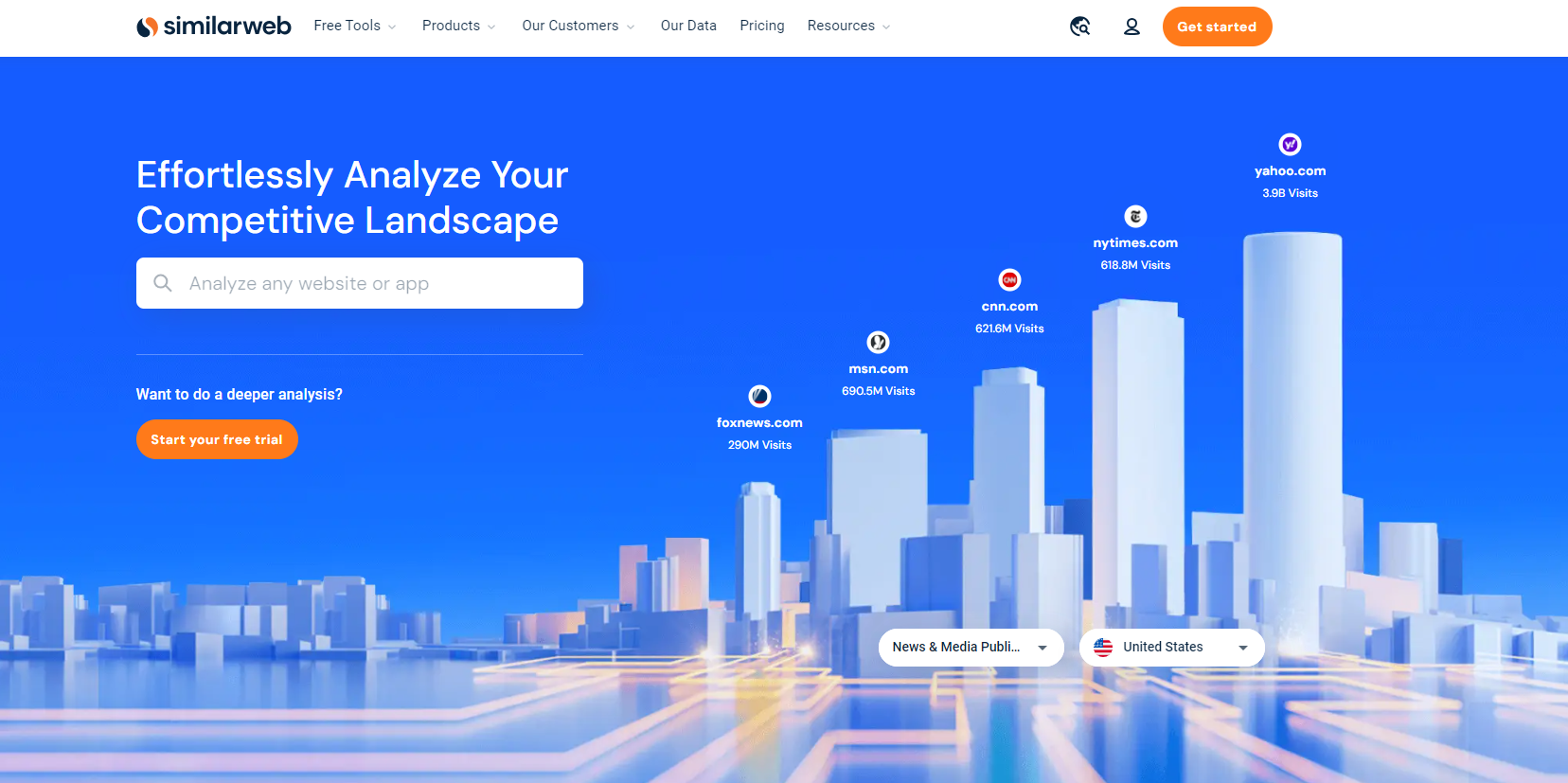
They reveal trending products, popular ad campaigns, and even audience engagement metrics. If you’re short on time, a virtual assistant skilled in market research can handle this for you.
4. Customer Goals
Providing an excellent customer experience builds trust and loyalty. Addressing customer concerns promptly is vital for maintaining a positive reputation and fostering repeat business.
From detailed product descriptions to responsive support, everything you do should enhance the buyer’s journey.
Tools like Zendesk can streamline customer service by organizing inquiries, automating responses, and keeping track of customer satisfaction.
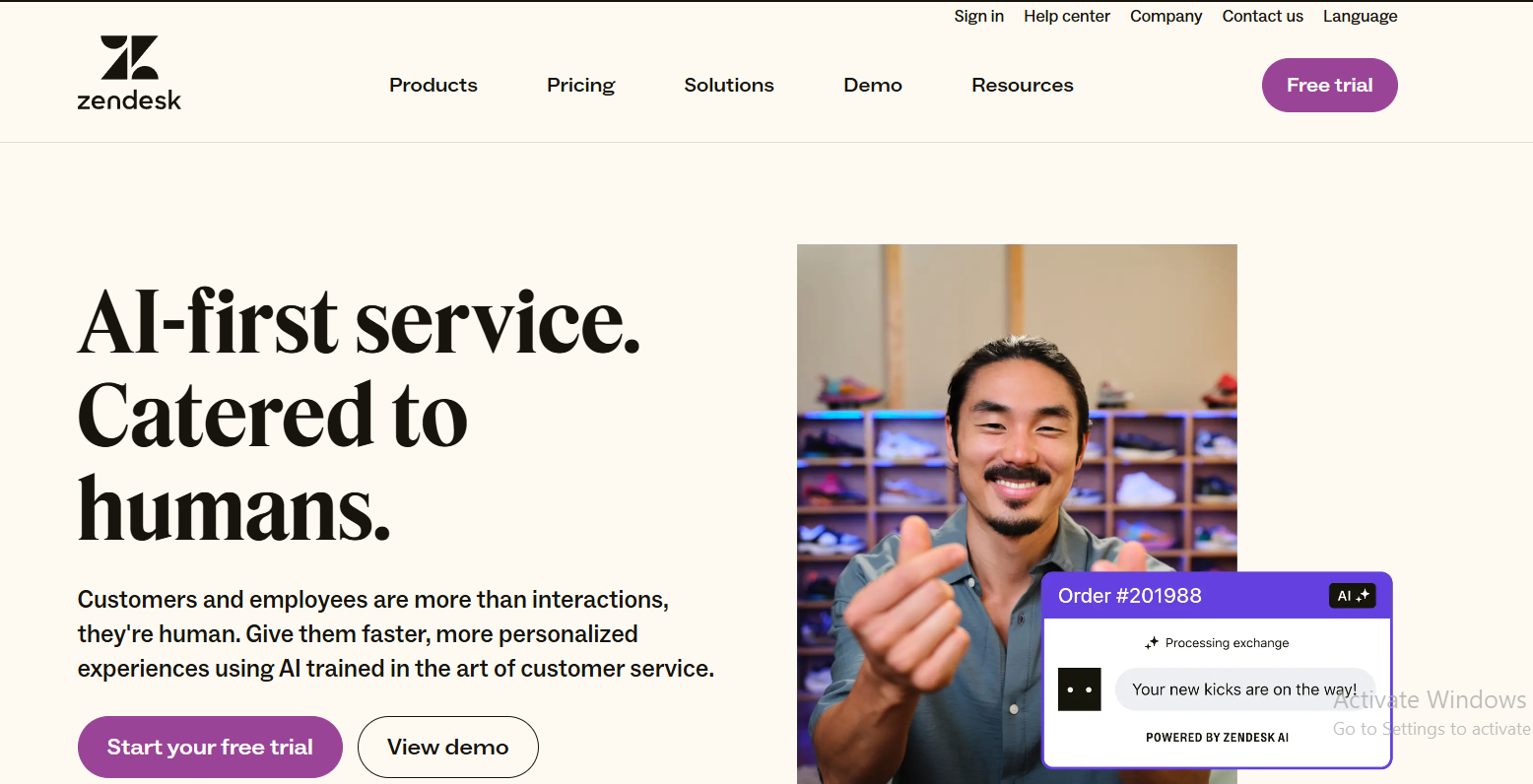
If live chat is part of your strategy, Tidio is a great app for offering real-time support. It’s user-friendly and integrates seamlessly with platforms like Shopify.
Moreover, hiring a customer support specialist can further improve response times and ensure issues are resolved quickly.
5. Growth and Learning
The eCommerce world evolves rapidly, so staying updated is non-negotiable. So, platforms like Udemy and Skillshare offer affordable courses on everything from Facebook Ads to email marketing.
If you prefer live interaction, Shopify Learn offers workshops and webinars tailored to dropshipping.
For hands-on learning, tools like SEMRush or Ahrefs can deepen your knowledge of SEO and keyword strategies, which are critical for driving traffic to your store.

If marketing isn’t your strength, a freelance digital marketer can handle campaigns while you focus on other aspects of your business.
6. Joining the Community
Want to build a team for dropshipping?
Surrounding yourself with like-minded entrepreneurs offers motivation and insights. Therefore, joining groups on platforms like Facebook, Quora, or Reddit connects you to experienced dropshippers who can share tips and recommend resources.

For example, I am a member of the Facebook group Dropshipping.com. Here I get valuable insights about the industry and lots of help from the members.

Also, apps like Meetup can help you find local networking events or eCommerce workshops. Encourage your team members to participate in these communities, as they can uncover competitor insights or find inspiration for your next campaign.
What Is The Team Structure for Dropshipping Business?
Building a strong team structure for your dropshipping business requires defining roles and deciding whether to hire in-house staff or outsource tasks to each team member.
When I started, I quickly realized the importance of assigning responsibilities to the right people and using the right tools. Let me guide you through each role, where to find help, and how much it might cost.
1. Define Roles and Responsibilities
In dropshipping, your team should focus on four main areas: product sourcing, customer service, marketing, and logistics. Effective business communications are essential for ensuring that each team member understands their responsibilities and can collaborate efficiently. Each role has specific responsibilities, and finding the right person for each is critical.
Reliable Supplier and Product Sourcing Specialist
This role involves finding trending products, negotiating with suppliers, and ensuring the products match your niche.
I started by doing this myself, using tools like AliExpress, Spocket, and DSers. As my store grew, I hired a product researcher.
You can find product sourcing specialists on platforms like Upwork or Fiverr, with rates ranging from $10 to $30 per hour depending on their experience.

For more budget-friendly options, you might consider hiring freelancers from regions like Southeast Asia, where skilled VAs often charge $5 to $10 per hour.
Website Builder
A skilled website builder is one of the most valuable assets for your dropshipping business. The design, functionality, and overall performance of your store directly impact customer experience and, ultimately, your sales.
A website builder focuses on creating a professional, user-friendly store that aligns with your brand and keeps customers coming back.
When I started my dropshipping journey, I used basic templates from Shopify to get my store up and running.
While this was fine in the beginning, I quickly realized that to stand out in a competitive market, I needed customizations and enhancements that went beyond the default settings. Hiring a website builder turned out to be a pivotal decision.

A good website builder should be proficient with platforms like Shopify, WooCommerce, or BigCommerce, depending on the eCommerce system you choose.
Familiarity with PageFly or Shogun is also essential, as these tools allow for advanced page design without requiring extensive coding knowledge.
However, having basic skills in HTML, CSS, and JavaScript is a big advantage for tasks like custom checkout flows or tweaking product page layouts.
Beyond technical skills, your website builder should understand UX/UI design principles.
This ensures your store is easy to navigate, visually appealing, and optimized for mobile users, who make up a significant portion of online shoppers. They should also be knowledgeable about SEO best practices, such as adding meta tags, optimizing images, and structuring pages to improve your site’s ranking on search engines.
Hiring a website builder doesn’t have to break the bank.
For basic setups, freelancers on Fiverr can charge as little as $100 per project, while more experienced professionals on Upwork or Toptal might cost between $20 and $100 per hour, depending on the complexity of your store.
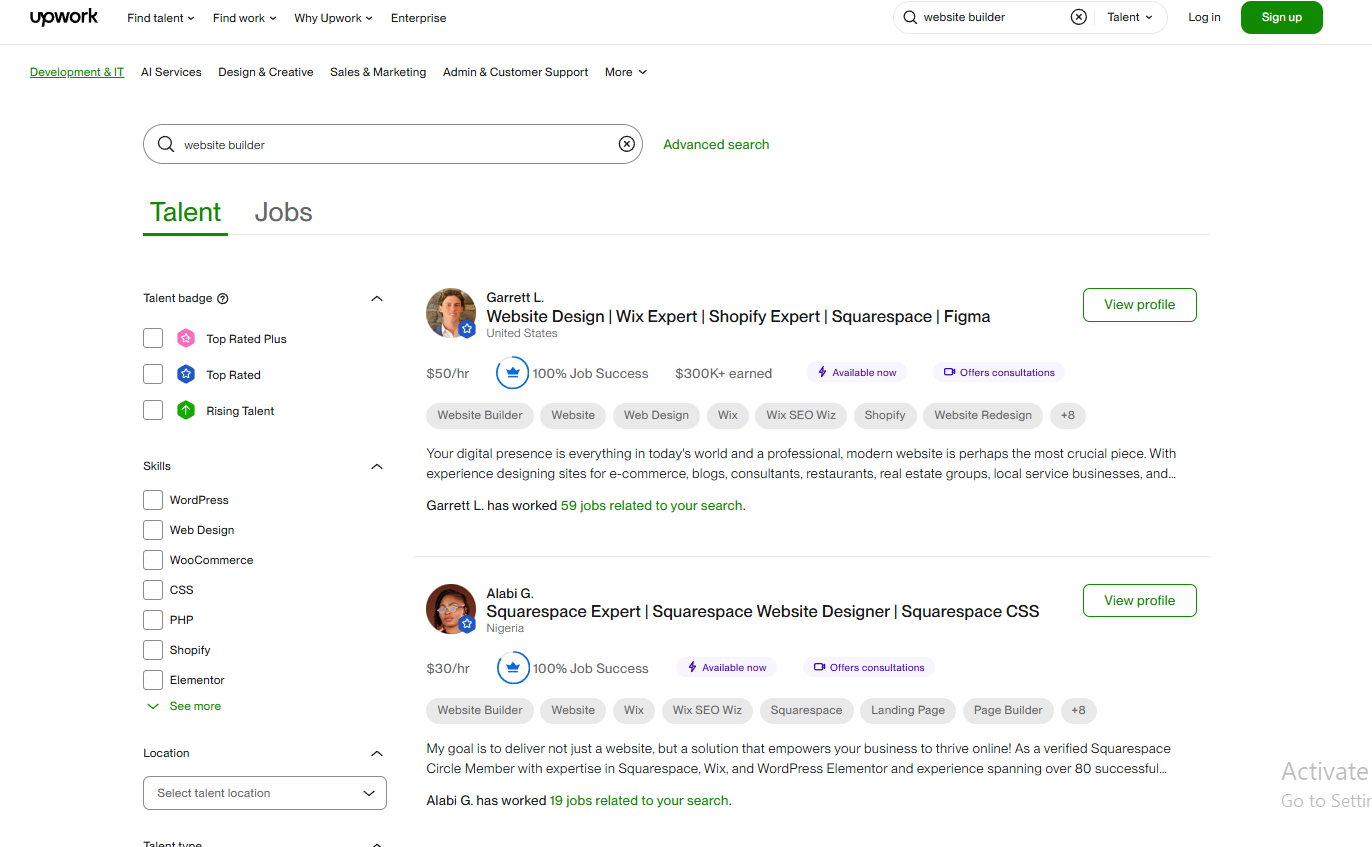
Customer Service Representative
When you want to build a team for dropshipping, this is the first stop!
Customer service can make or break your business. A good representative handles inquiries, resolves complaints, and ensures customers feel valued. Early on, I managed customer emails and chatted myself using Zendesk, but as the volume increased, I brought in help.
Hiring a virtual assistant for customer service is easy with platforms like OnlineJobs.ph, where rates typically range from $4 to $8 per hour.
If you prefer someone with advanced skills and experience, check Upwork, where rates go from $10 to $20 per hour.

For live chat support, tools like Tidio or LiveChat integrate seamlessly with your eCommerce platform and let your assistant provide real-time support.
Marketing Manager
This role involves creating and executing campaigns to drive traffic and boost sales. So, in my opinion, it is a must when you build a team for dropshipping.
Whether it’s managing social media ads, writing email campaigns, or optimizing SEO, a skilled marketer is essential.
I started by outsourcing marketing tasks to freelancers on Upwork, with costs ranging from $15 to $50 per hour for experienced digital marketers.

Also, platforms like Fiverr offer more affordable options for specific tasks like ad design or keyword research, starting at $10 per task.
Moreover, here’s a tip from me: For tools, I used Canva for creating ad visuals, AdSpy for competitor research, and Klaviyo for email marketing.
So, if you’re hiring a freelancer, make sure they’re comfortable using these tools to maximize your investment.
Logistics Coordinator
This role ensures that orders are processed, tracked, and delivered on time. Early on, I relied on apps like AutoDS to automate much of the logistics process. And, I still rely on them.
However, as the order volume grew, I hired someone to manage supplier communication and track fulfillment issues.
Freelancers for logistics coordination are available on Upwork and Freelancer.com, with rates typically between $8 and $20 per hour.

For a more hands-on approach, you can also explore hiring through We Work Remotely, a platform that connects you with remote talent for operational roles.
Data Analyst
Understanding your store’s performance through data is crucial for scaling effectively. So, when you are building a team for dropshipping- include this.
A data analyst tracks metrics like sales trends, ad performance, and customer behavior to help you make informed decisions.
When I scaled my ads, my data analyst’s insights helped me double down on what was working and cut costs on underperforming campaigns.
You can find data analysts on Upwork or Toptal, with rates ranging from $20 to $80 per hour depending on experience.

Content Creator
Content drives organic traffic and builds credibility. A content creator focuses on writing blog posts, creating product descriptions, and developing engaging materials like how-to guides or videos.
Thus, when you are building a team for dropshipping, you need these people.
When I invested in blogging to drive SEO, my content creator helped rank my store for relevant keywords.
Freelance writers and creators on ProBlogger or WriterAccess charge anywhere from $0.05 to $0.20 per word for written content, while video creators on Fiverr may charge $50 to $500 per video depending on its complexity.
2. In-House vs. Outsourcing Decisions
Deciding whether to hire in-house or outsource depends on your business needs and budget.
Offering diverse communication channels is essential for engaging with both potential and existing customers, meeting their needs, and building trust. In-house staff can provide consistency and a deeper understanding of your brand, while outsourcing offers flexibility and cost savings.
For example, my in-house marketer worked closely with me to build a consistent brand image, while outsourced customer support freed me to focus on strategy.
Also, platforms like Trello or Monday.com made it easy to coordinate between in-house and outsourced team members by organizing tasks and tracking progress.
 Tip: Costs and Tools That Worked for Me
Tip: Costs and Tools That Worked for Me
When I first started building my team for dropshipping, I kept costs manageable by outsourcing most roles.
For example, my product researcher cost me $8 per hour on OnlineJobs.ph, and my customer service assistant charged $10 per hour on Upwork. Also, I used Slack for team communication and Google Workspace to share files and track schedules.
By combining in-house expertise with outsourced skills, I was able to grow my dropshipping business while staying within budget. The right people, paired with effective tools, make all the difference.
How To Find And Recruit Your Team For Dropshipping Business in 2025?
Building a strong team for your dropshipping business isn’t just a task—it’s an investment in your success.
Whether you’re starting small or scaling quickly, having skilled, reliable people in the right roles can make all the difference.
Let’s talk about how you can find the right talent, assess their abilities, and bring them on board in a way that sets your business up for long-term growth.
1. Where to Find Talent
When I first started building my team, finding the right people felt overwhelming. Thankfully, there are so many platforms that make this process easier today.
For instance, I found amazing freelancers on Upwork and Fiverr, where you can filter candidates based on their skills and experience. The costs here are flexible—you can find virtual assistants for as little as $5 an hour or experienced marketers for $20 to $50 an hour.
Moreover, you can post a job about what you are looking for, and add the job description, skills needed, and other requirements.
Once you find your perfect freelancer, click “Hire“.
For more professional roles, LinkedIn is a fantastic platform. I used it to connect with candidates who had specific dropshipping experience. You can post job listings or directly reach out to people who list skills like eCommerce management, product sourcing, or digital marketing.
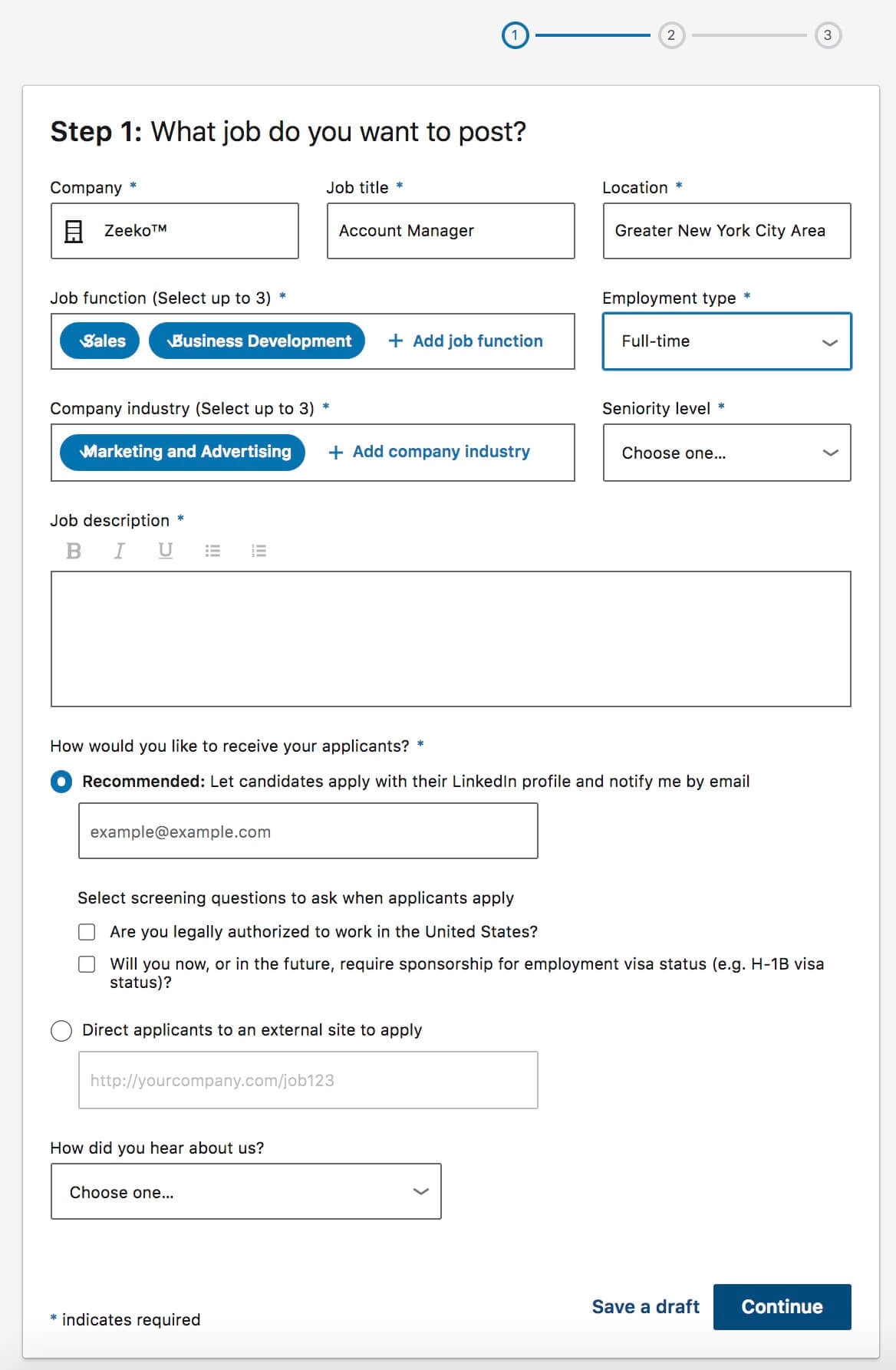
Another great resource is the Dropshipping.com community, which connects you with over 10,000 eCommerce founders and professionals. Thus, this way, you can build a team for dropshipping.
It’s not just for hiring—you can network, share insights, and even discover hidden talent from within the community.

Moreover, attending industry events or participating in forums like Reddit’s Dropshipping subreddit also helped me uncover knowledgeable and passionate individuals.
For specific needs like graphic design or video editing, Toptal and Dribbble are great for finding top-tier talent. I’ve used Dribbble to hire a designer who created stunning ad creatives, which boosted my click-through rates significantly.

2. Assessing Candidates
When you start evaluating candidates to build a team for dropshipping, it’s not just about ticking boxes—it’s about finding people who truly align with your business goals.
I always start by clearly defining what the role requires. For example, when hiring a product sourcing specialist, I looked for someone familiar with tools like AliExpress, Spocket, or AutoDS, because these apps are core to identifying and sourcing winning products.
I also assess candidates’ portfolios and experience. One of the best decisions I made was asking for proof of their previous success.
For instance, when hiring a marketing manager, I asked for campaign results or examples of ads they had run. Hence, tools like Canva or Facebook Ads Manager can give you a clear picture of what they’re capable of.
For customer service roles, I’ve used platforms like OnlineJobs.ph, which is perfect for finding affordable and skilled VAs.
Furthermore, to test their capabilities, I created mock customer inquiries to see how quickly and effectively they could respond. So, their familiarity with tools like Zendesk or Tidio was a big plus.
If you’re hiring for more advanced roles, like an SEO specialist or email marketer, ask them to demonstrate their knowledge using tools like SEMRush, Ahrefs, or Klaviyo.
I’ve often asked candidates to create a mini-strategy for my niche as part of the interview process—it’s a great way to gauge their expertise.
3. Interviewing and Hiring
Interviews should feel like conversations, not interrogations. So, if you want to build a team for dropshipping, I suggest you do interviews.
When I interview candidates, I focus not only on their technical skills but also on their ability to fit into my team’s culture.
I always include situational questions to see how they think on their feet. For example, I asked my customer service candidate how they would handle a customer upset about delayed shipping. Their response gave me insight into their problem-solving abilities and empathy.
It’s also important to assess their familiarity with dropshipping-specific challenges. For example, I’ve asked potential hires how they would identify trending products. Hence, some mentioned using AdSpy or Dropshipping.com’s winning product lists, which showed me they understood the tools of the trade.
For technical roles, I sometimes offer a trial period or test project. For instance, I had a candidate create a simple email campaign using Mailchimp to see how well they could craft engaging content and segment an audience.
When it comes to hiring, I always negotiate terms that are fair and benefit both parties. Clear communication about responsibilities, expectations, and compensation has helped me build long-term relationships with my team members.
 Tip: What’s Worked for Me?
Tip: What’s Worked for Me?
Recruiting the right team isn’t about filling positions—it’s about finding people who will grow with your business.
The combination of skilled freelancers from platforms like Upwork, community connections from Dropshipping.com, and ongoing training using tools like Shopify Learn or Skillshare has been a game-changer for me.
Essential Skills for a Dropshipping Team
Running a successful dropshipping business requires a team with a mix of skills to keep everything running smoothly. Let me guide you on what I think are the must-haves for your team:
Marketing and Social Media Know-How
First, I advise you to focus on marketing and social media skills. These are critical for promoting your store and attracting customers.
- Social Media Savvy: For example, platforms like Facebook, Instagram, and TikTok are great for reaching your audience. I suggest you have a team that can create engaging posts and manage campaigns effectively.
- SEO Expertise: Hence, you need someone who knows how to optimize product pages and blogs to rank higher in search engines. Tools like SEMRush or Ahrefs, I think, are essential for tracking keywords and boosting organic traffic.
- Influencer Partnerships: Partnering with influencers is a smart move. Thus, I suggest you find someone who can identify the right influencers, negotiate deals, and manage these relationships to maximize your ROI.
- Email Marketing: I advise you to focus on email campaigns too. Tools like Klaviyo and Mailchimp, for example, can automate and optimize email marketing, ensuring you reach the right audience at the right time.
Customer Service That Stands Out
Next, I think providing excellent customer service is key to building trust with your customers.
- Support Skills: For example, tools like Zendesk and Tidio can streamline customer support, helping your team handle inquiries efficiently. I suggest you invest in these to keep things organized.
- Conflict Resolution: When issues arise, I advise you to train your team to handle complaints professionally. Turning a negative situation into a positive one can win customer loyalty.
- Clear Communication: Thus, your team should communicate effectively, whether through email, phone, or social media, to ensure customers feel heard and valued.
Website Management and Development Expertise
Finally, I suggest you ensure your website is user-friendly and functional because it’s the backbone of your business.
- Website Development: I think platforms like Shopify or WooCommerce are ideal for creating visually appealing, easy-to-navigate websites. For example, focus on having a seamless user experience.
- Management Skills: Hence, tools like Google Analytics and Hotjar can help your team monitor website performance and make improvements based on user behavior.
- E-commerce Platform Knowledge: I advise you to train your team on platforms like Shopify or BigCommerce to handle orders, payments, and shipping efficiently.
With these skills and tools, I think your team will be ready to manage your dropshipping store like pros, ensuring a smooth and successful operation.
How To Build a Team for Your Dropshipping Business?
Building a productive team for your dropshipping business is the cornerstone of scaling efficiently and sustainably. Building a productive team for your online business is the cornerstone of scaling efficiently and sustainably.
From hiring the right people to fostering a culture of trust and providing ongoing training, this guide explains every step to assembling and managing a winning team.
Whether you’re a beginner or scaling to high revenue, here’s how to approach team-building at every stage.
Stage 1: $0-$1,000 Daily Revenue
When starting out, you’re likely wearing multiple hats, handling everything from product research to customer service.
While this is manageable initially, it becomes overwhelming as you start generating consistent revenue. At this point, your first step toward building a productive team is hiring a customer service agent. This hire is critical because it removes a time-consuming task from your plate while improving customer satisfaction.
When hiring, prioritize team members with the essential skills required for success in e-commerce.
Platforms like OnlineJobs.ph and Upwork are excellent for finding experienced virtual assistants, many of whom are passionate about customer service and e-commerce.
These agents typically work for $3-$4 per hour, making this a cost-effective hire. So, focus on candidates who have experience with dropshipping or online sales and are eager to learn.
Moreover, providing proper training is equally important. Equip your customer service agent with resources to handle complaints effectively, such as FAQs, templates, and tools like Google Translate or ChatGPT for multilingual communication.
Offer ongoing education to help them adapt to new tools and stay current with customer service trends. This approach not only boosts their performance but also prepares them for long-term growth within your team.
Stage 2: $1,000-$3,000 Daily Revenue
At this stage, your workload grows as you juggle multiple winning products. Expanding your team becomes essential, and the focus shifts to building a balanced team with complementary skills.
And, this si something you must think of when building a team for dropshipping.
The next hires to prioritize are a funnel builder and a video editor, both of whom play pivotal roles in scaling your store.
When hiring a funnel builder, look for someone experienced in tools like ClickFunnels, PageFly, or Funnelish. This role requires skills in graphic design, copywriting, and product presentation.
Test their abilities by assigning a sample project, and provide constructive feedback to help them refine their work.
A funnel builder typically costs $5 per hour, with each funnel costing about $15. As for you, I advise you to offer ongoing training and career development opportunities, such as workshops, which can keep them motivated and engaged.
For a video editor, the main requirement is experience creating dropshipping ads. So, start by assigning them competitor videos to edit or localize, paying $10 per video.
If their work meets your expectations, consider transitioning them to an hourly rate.
Also, to maintain a positive team culture, give both hires clear roles and responsibilities, ensuring they understand their contributions to your overall goals.
Stage 3: $3,000-$10,000 Daily Revenue
As your revenue grows, your team must expand further to sustain the momentum. Thus, this is also important stage when you build a team for dropshipping.
Adding a second funnel builder and video editor ensures your operations can handle increased product launches.
This is also the time to hire a Facebook manager and an email marketer, key roles that help streamline your advertising and communication strategies.
Your Facebook manager will manage ad campaigns, ensuring they are optimized and structured for success.
When hiring, focus on finding someone who is both experienced and flexible, capable of handling a fast-paced, ever-changing environment. Hence, they should also be aligned with your vision and values to ensure they fit into your team culture.
An email marketer, meanwhile, will take charge of creating and optimizing email and SMS campaigns. This role requires someone with advanced skills, so consider hiring from platforms like Upwork.

Thus, they may cost $1,250 per month, but their impact on your revenue—often contributing 20-25%—makes it a no-brainer investment.
Stage 4: $15,000-$25,000 Daily Revenue
At this stage, maintaining consistency becomes the biggest challenge. Your team must now include a CFO and a COO, in addition to a third funnel builder and video editor. These roles ensure that your financials and operations remain well-organized as your business scales.
A CFO manages financial reporting, ensuring accurate profit-and-loss sheets. This role doesn’t require a hefty salary; you can hire someone for $10-$20 per hour on platforms like OnlineJobs.ph.

However, they must be detail-oriented to prevent errors that could disrupt your business.
A COO, on the other hand, takes on a leadership role, managing day-to-day operations, KPIs, and team dynamics.
Hiring a COO is challenging, as they must have a strong track record in ecommerce or dropshipping. Look for candidates through referrals, LinkedIn, or Upwork, and expect to pay around $6,000 per month plus a small profit share.
Moreover, to foster a culture of trust, you must encourage open communication, and empower your COO to make decisions and take ownership of their work.
Their ability to handle operations allows you to focus on high-value tasks like product research and media buying.
How To Manage Your Team For Dropshipping?
Effectively managing your team is a cornerstone of success in your dropshipping business. From communication to performance tracking and motivation, every aspect of team management contributes to creating a harmonious and productive environment.
When I started managing a remote team, these strategies helped me stay organized and keep everyone aligned. Let me share what worked and how you can implement it seamlessly.
1. Communication Tools and Strategies
Strong communication is at the heart of any successful team. Early on, I realized that clear and consistent communication was the key to avoiding misunderstandings and ensuring everyone stayed on track.
So, tools like Slack and Microsoft Teams became my go-to for organizing conversations. Slack’s ability to create dedicated channels for specific projects or topics helped my team stay focused and reduced information overload.

For example, we had one channel for product sourcing discussions and another for marketing updates, making it easy to find relevant information.
For face-to-face interactions, especially with a remote team, I relied on Zoom and Google Meet for regular video calls. These meetings created a sense of connection and allowed us to brainstorm ideas together in real time.
Moreover, weekly check-ins became part of our routine, providing everyone an opportunity to discuss progress, challenges, and upcoming priorities.
I also encouraged an open-door communication policy, where team members could share feedback or ideas freely.
One tool that helped foster this culture was Workleap, which allows employees to submit anonymous feedback and suggestions. This proactive approach not only improved relationships within the team but also boosted overall efficiency.

2. Performance Monitoring
Tracking performance is essential for hitting your business goals. When I first started managing tasks, I used tools like Trello to assign responsibilities and track progress.
Over time, I transitioned to Asana, which allowed me to visualize tasks, set deadlines, and track completion rates more effectively. These tools helped me stay on top of my team’s workload and identify any potential bottlenecks early.
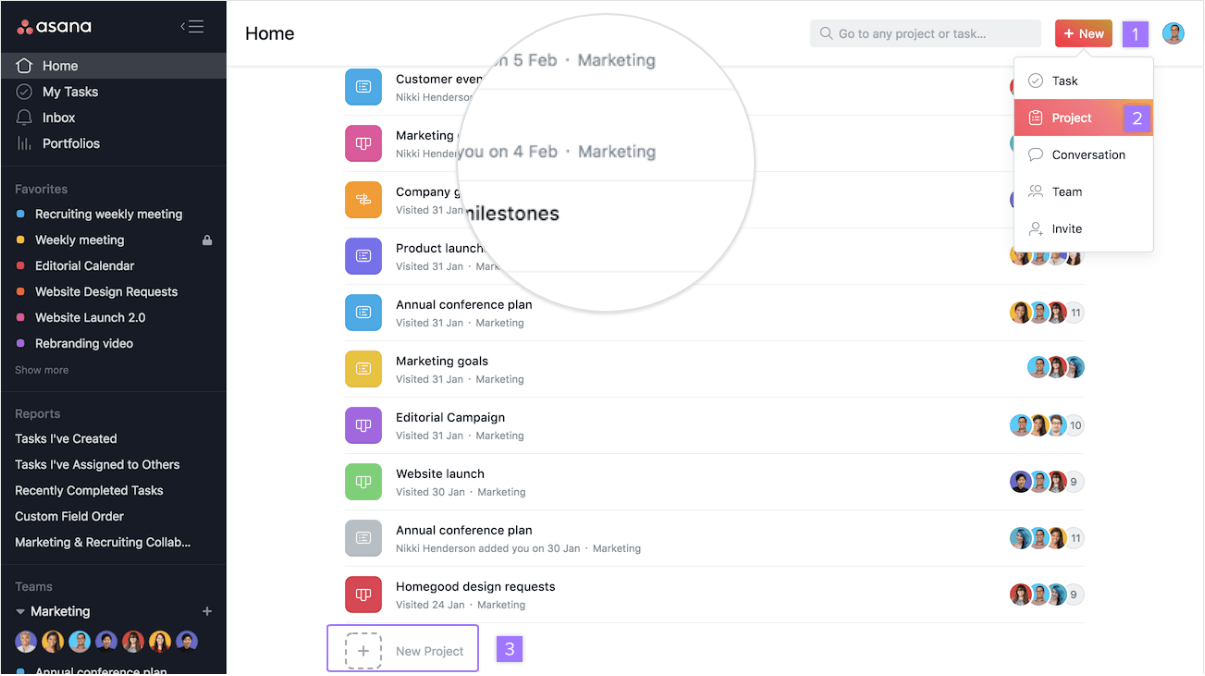
To keep everyone aligned, I set clear, measurable goals for each role. For example, the marketing team had targets for ad engagement rates, while the customer service team aimed to reduce response times to under 24 hours.
Furthermore, regular performance reviews also became part of our process. During these reviews, I’d provide constructive feedback and recognize achievements.
To make things even more transparent, we implemented performance dashboards using Google Data Studio. This visual approach helped the team see their progress in real time and motivated them to keep improving.
Performance Monitoring and Customer Satisfaction
Keeping your team motivated and engaged is crucial for retaining top talent. Thus, consider this when you are building a team for dropshipping.
One of the first things I did was introduce small incentives for hitting targets, like bonuses or extra days off.
Offering professional development opportunities also made a big impact. For example, I encouraged my team to take courses on platforms like Dropshipping.com, Udemy, or Shopify Learn to sharpen their skills. This not only benefited their growth but also brought fresh ideas and strategies to the business.

Hence, creating a positive work environment was another priority. I celebrated individual and team milestones, even if it was something as simple as completing a successful campaign or getting great customer feedback.
So, tools like Bonusly allowed me to give small, meaningful rewards to recognize accomplishments, which boosted morale across the board.

Engaging with my team on a personal level was equally important. Regular one-on-one meetings helped me understand their aspirations and address concerns.
These conversations fostered a sense of trust and made them feel valued. Over time, this supportive environment turned my team into a community, where everyone was motivated to achieve shared objectives.
 Tip: What Worked for Me?
Tip: What Worked for Me?
Managing a team, especially remotely, can be challenging, but the right tools and strategies make it much more manageable.
Moreover, apps like Slack, Asana, and Zoom kept communication and tasks organized, while platforms like Hubstaff and Google Data Studio made performance tracking straightforward.
Scaling Your Business With The Team For Dropshipping
When it’s time to expand your dropshipping business, the key is to grow strategically. Scaling requires balancing ambitious goals with careful, data-driven decisions. Let me share how I approached scaling and the tools that made it manageable and effective.
 Growth Strategies
Growth Strategies
Scaling starts with focusing on the right products and automating repetitive tasks. When I wanted to expand, I prioritized finding products with proven demand.
Firstly, platforms like Dropshipping.com became my go-to for discovering strategies to find winning products. Their curated lists showed me what was trending, which allowed me to focus on items that already had a track record of success. This approach saved time and minimized guesswork.
Next, automation was another game-changer. As orders increased, I integrated tools like AutoDS into my store.
Thus, this app handled tasks like syncing inventory, processing orders, and tracking shipments automatically. This freed up hours that I could dedicate to scaling strategies, like testing new marketing channels or building stronger supplier relationships.
Moreover, I am using automation tools for every aspect of my dropshipping business, like marketing, customer support, order tracking, etc.
 Analyzing Business Metrics
Analyzing Business Metrics
Scaling is impossible without understanding your numbers. I began closely monitoring key metrics like sales trends, conversion rates, and customer acquisition costs.
So, tools like Google Analytics and Shopify’s built-in dashboard provided a clear view of my performance.

These tools helped me spot which products were performing well and where I was losing money, so I could quickly adjust my strategies.
Marketing was another area where data made a huge difference. By analyzing ad performance, I optimized campaigns to get better returns.
Tools like Minea helped me identify winning ad strategies and refine my approach. For instance, I learned that videos featuring product demonstrations consistently performed better than static images, so I adjusted my campaigns accordingly.

Supplier performance is also critical when scaling. I used Spocket and CJdropshipping to maintain strong supplier relationships and ensure product quality.
Thus, keeping track of lead times and fulfillment rates helped me avoid delays and keep customers happy.
These metrics created a solid foundation for sustainable growth, and by reviewing them regularly, I stayed on top of potential issues.
 Legal and Financial Considerations
Legal and Financial Considerations
Scaling your business isn’t just about growth; it’s also about making sure your operations are legally and financially sound. Early on, I realized the importance of setting up a legal framework to protect both my business and personal assets.
For compliance, I secured a business license and obtained an EIN (Employer Identification Number) for tax purposes.
This step was straightforward with platforms like Doola, which guided me through LLC formation. An LLC provides liability protection, which gave me peace of mind as my business scaled.
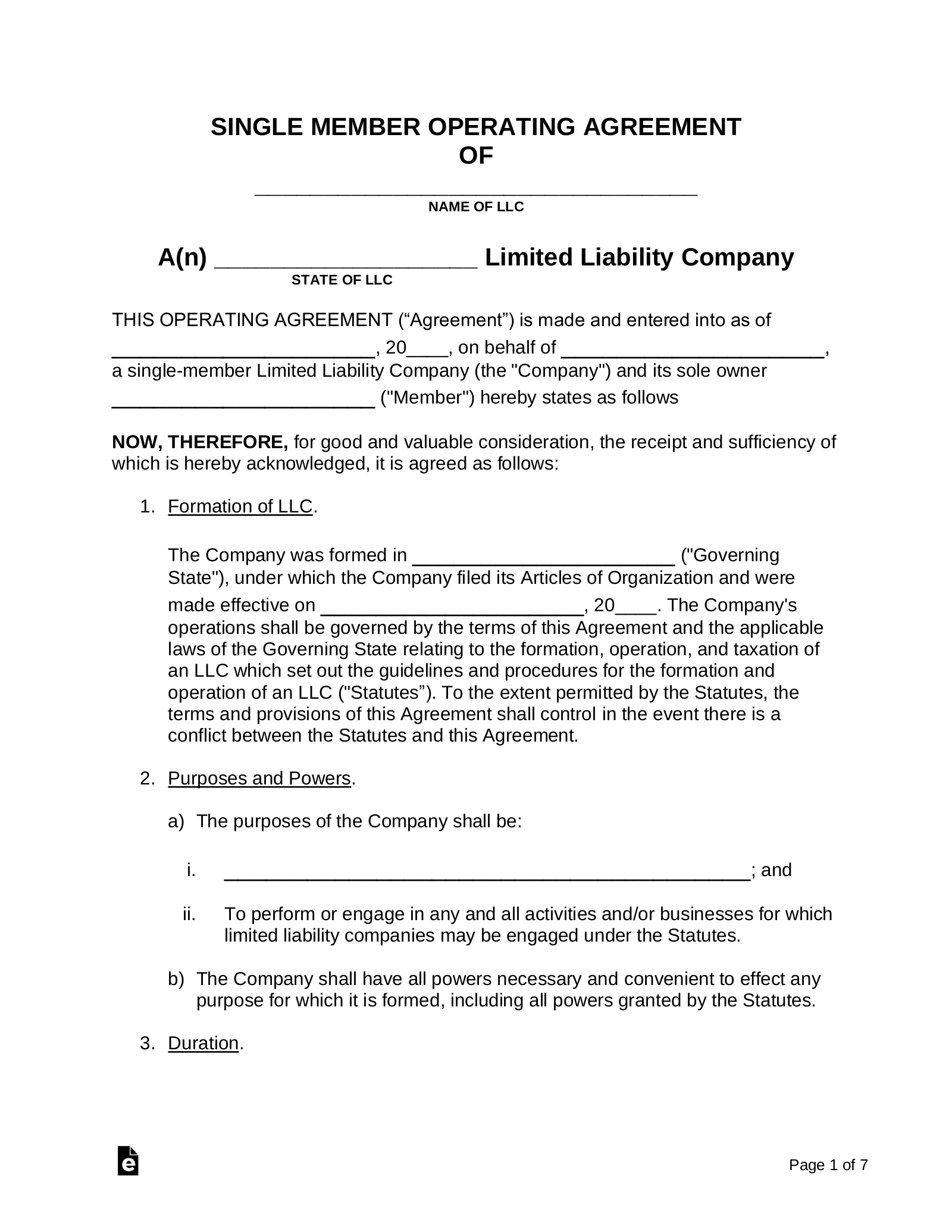
It also made me appear more credible to suppliers and customers, building trust along the way.
Financial management was another priority. Keeping track of expenses, sales, and payments was vital for staying profitable.
I relied on tools like QuickBooks and Wave for bookkeeping. These apps simplified record-keeping and ensured I had accurate financial data for making strategic decisions.
Furthermore, budgeting became more critical as I scaled. Allocating funds for marketing, inventory, and operational expenses ensured I maintained a healthy cash flow.
However, financial reports generated through Shopify and Google Data Studio helped me monitor my performance and make informed decisions.
Conclusion
Building a team for dropshipping is not just a step—it’s the foundation for long-term success. From hiring a customer service representative to scaling with roles like marketers and logistics coordinators, every decision plays a vital role in your business growth.
In my experience, defining clear roles, choosing reliable platforms like Upwork or Fiverr, and leveraging tools such as Slack and AutoDS are game-changers.
Before starting, consider your budget, business goals, and workload. Decide whether outsourcing or in-house hiring suits your needs. Most importantly, invest in training and fostering a collaborative team culture.
A well-structured team doesn’t just make your business run smoothly—it positions you for sustainable growth and profitability. Start small, stay organized, and scale strategically!















![The Top 21 3PL Companies Compared [2025 List & Guide]](https://images.weserv.nl/?url=https://prod-dropshipping-s3.s3.fr-par.scw.cloud/2024/03/Frame-3922469.jpg&w=420&q=90&output=webp)